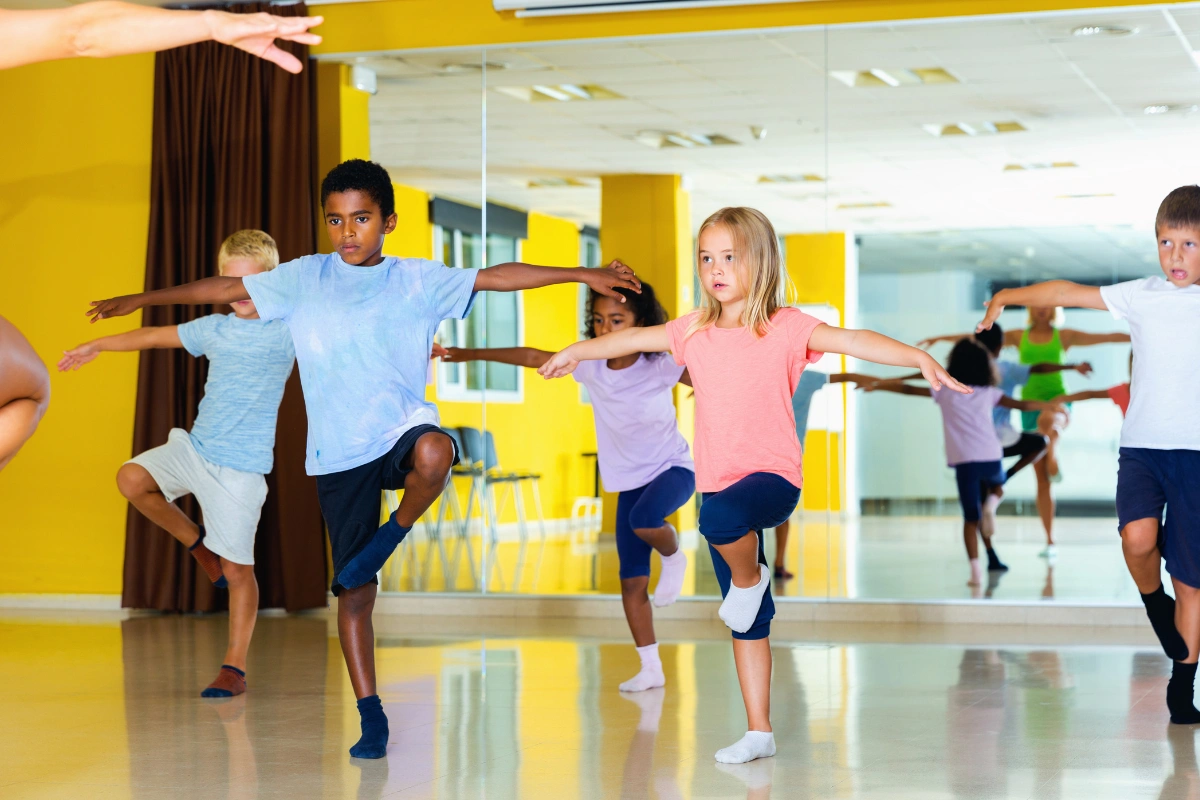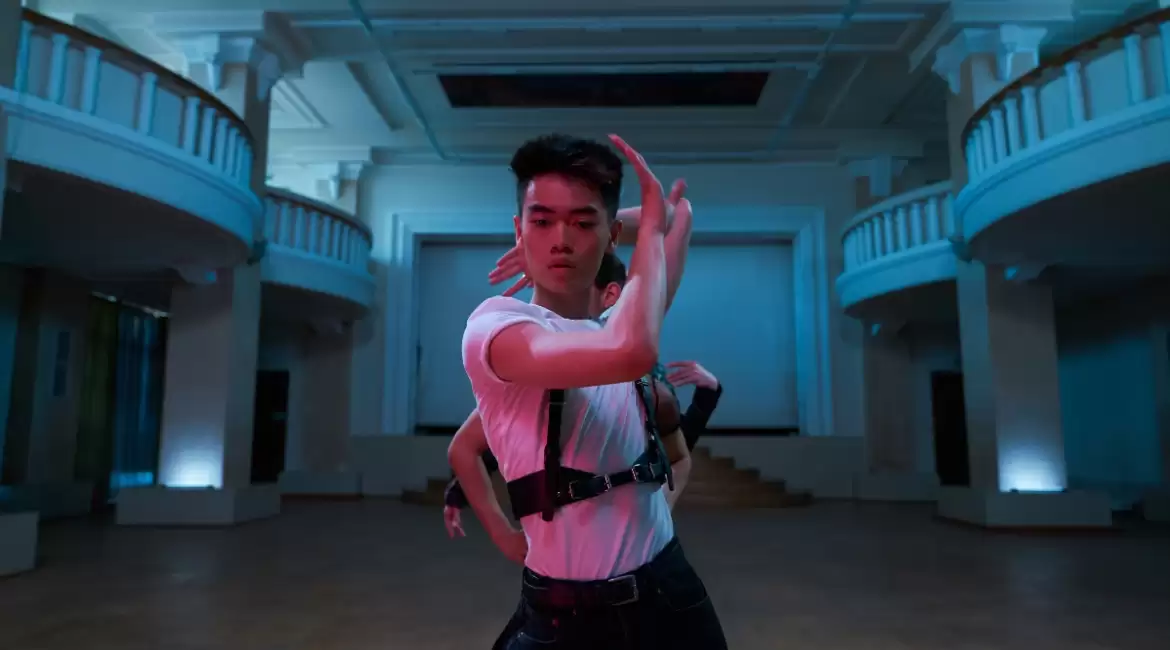Embarking on the journey of choreographing a dance routine can be an exhilarating yet daunting endeavor. Whether you’re a seasoned dancer or a novice exploring your creative potential, crafting a captivating dance piece requires a blend of inspiration, technique, and artistic vision. In this guide, we will demystify the process and equip you with six simple steps to guide you through the intricacies of choreography. From finding your muse to polishing your final performance, each step is designed to empower you to unleash your creativity and bring your artistic vision to life on the dance floor. So, let’s dive in and discover the joy of choreographing a dance routine that reflects your unique style and passion.
Find a song… and listen to it like crazy
Finding the perfect song for choreography can either be a breeze or a challenge of its own.
Sometimes, you stumble upon a track for the first time and immediately sense that it’s the one you’ve been searching for.
Other times, despite combing through your entire music collection on iTunes, scrolling through SoundCloud, and exploring endless Spotify playlists, nothing quite clicks.
Once you finally settle on a song and pinpoint the specific section you want to choreograph, immerse yourself in it completely. Listen to it on repeat, diving deep into its layers with purpose.
Delve into the lyrics to grasp how they resonate with you and the message of the song. Uncover subtle nuances like hidden hi-hats or catchy riffs that you can accentuate in your choreography.
Identify the pathways for movement that you envision – do you aim to synchronize with a particular lyric? Or perhaps accentuate a powerful double bass beat? Allow ideas to flow freely as you absorb the music.
While you may not have every move planned out, strive to understand the essence of how you want to express yourself physically to the music. If necessary, edit the song to fit your vision before diving into choreography.
Having to pause or skip around the track can disrupt the creative flow, so ensure your music is tailored to seamlessly support your choreographic process.

Get (actively) inspired
Sure, you can watch videos of your favorite choreographers and put your own spin on their routines. However, to truly create something that reflects your unique voice, draw inspiration from the rich tapestry of your own experiences and the cultural milieu that surrounds you.
Engage with literature that challenges your thinking, immerse yourself in visually captivating films, marvel at the extravagant costumes showcased at events like the MET Gala, and wander through the halls of intriguing museums!
Every form of art has the potential to ignite your creative spark. When you encounter something that moves you, capture it in writing, ensuring you can revisit those moments of inspiration later on.
Even a casual chat with a friend can unexpectedly blossom into a seed for a dance routine or the genesis of a fresh dance move. Allow yourself to be open to the myriad sources of inspiration that abound in your daily life.
Freestyle
Freestyling isn’t about meticulously planning out every move for your choreography. In fact, chances are you won’t even recall most of the steps you take!
The essence lies in allowing your body to organically respond to the music. Press play and let the rhythm guide your movements. Pay attention to how you instinctively sway and groove to specific beats and melodies.
Consider this initial freestyle session as the foundational “layer” for your choreography. From here, you can experiment with variations or layer more intricate movements on top.
And if you find yourself staring at a blank canvas even with your favorite song blasting, fear not! There are resources available to spark your creativity. Check out videos like the one by Clay, offering invaluable tips for crafting unique movements, even when you’re grappling with a choreographer’s block.

Piece combos together by “Chunking”
When selecting a song for choreography, you likely identified certain sections that resonated with you and envisioned them translating beautifully into movement.
Whether it’s a climactic build-up, a soulful breakdown, or a mesmerizing instrumental interlude, start by tackling those standout parts. There’s no rule saying you have to choreograph in chronological order from start to finish.
Begin with the chunks that flow naturally, where inspiration strikes effortlessly, and then weave the remaining choreography around them, like threads in a tapestry.
Once you’ve crafted choreographic gems from your favorite sections, don’t overlook the importance of the transitional segments.
Even though they may lack the intensity of rapid beats or intricate combinations, these quieter moments possess the potential to captivate. Sometimes, it’s these serene interludes that leave the most lasting impression.
Take a cue from Galen’s work, where her choreography exudes a commanding presence throughout. Even during the simpler movements in calmer passages, her captivating demeanor fills the space, setting the stage for the explosive moments that follow.
Polish your execution of moves
Many of us encounter the challenge of envisioning captivating choreography in our minds, only to find it falls short when translated onto our bodies. When faced with this hurdle, the key is diligent training.
Some refer to this process as “cleaning” or “setting,” which involves meticulously refining the shapes and lines your body creates, analyzing the pathways between key points, and drilling rapid combinations until they become second nature.
It’s crucial to recognize that the way you choreograph directly impacts how the final piece will appear. Therefore, when mapping out your dance, commit to executing each move with full intensity.
For instance, if you incorporate a plié into your sequence, ensure your knees bend deeply. Allow body rolls to traverse your entire frame, from head to toe. And if your choreography ventures into floorwork territory, fully commit to getting down on the ground.
Remember, the magic won’t materialize spontaneously when you step onto the stage or face the camera. Instead, cultivate excellence in the moment of creation itself, ensuring that every movement radiates brilliance from the outset.

Make edits… but not too many
Within the intricate tapestry of your choreography, there are undoubtedly moments that resonate deeply with you, ones you perceive as flawless and untouchable. It’s important to honor these gems and resist the urge to alter them unnecessarily.
However, considering that this might be your inaugural foray into choreography, the piece as a whole might still possess a raw, unrefined quality. As the renowned novelist Ernest Hemingway once famously quipped, “The first draft of anything is sh*t.”
So, if your creation falls short of your vision, don’t be disheartened. Understand that perfection is a journey, not an immediate destination, and commit to the process of refinement.
Experiment with various movements, explore alternative sequences, consider incorporating floorwork, or even daringly change the direction of your piece. Embrace the thrill of discovery as you navigate through the creative process, acknowledging what resonates with a resounding “Yes!” and what falls short with a gentle “Nope, not quite.”
Creating art is inherently iterative, akin to sculpting a masterpiece from a block of marble. Embrace the evolution of your work through multiple drafts, relishing each iteration as a step closer to your artistic vision.
Yet, amid this quest for perfection, it’s crucial to recognize the point of diminishing returns. As a perfectionist, you might perpetually tinker with your creation, never quite feeling satisfied. However, there comes a pivotal moment when you must draw a line in the sand and declare, “This is it. It’s ready.”
Ultimately, the essence of artistic creation lies not in attaining perfection but in crafting something that evokes a sense of pride and accomplishment. So, when you reach that moment of completion, embrace it with grace and let your creation stand as a testament to your creativity and dedication.
Summary
Choreographing a dance routine is a multifaceted process that requires careful planning, creativity, and attention to detail. In this comprehensive guide, we delve into six fundamental steps that can help dancers of all levels navigate the intricacies of choreography with confidence and flair.
We begin by exploring the importance of finding inspiration, whether it be through music, personal experiences, or the world around us. From there, we delve into the process of selecting the perfect music and analyzing its structure to inform our choreographic decisions.
Next, we discuss the significance of movement exploration and experimentation, encouraging choreographers to let their bodies respond organically to the music while honing their technical skills. This stage also involves refining movements and transitions to create a seamless and visually compelling routine.
As we move forward, we address the importance of storytelling and emotion in dance, guiding choreographers in conveying their intended message or theme through movement and expression. Additionally, we emphasize the value of incorporating variety and dynamics to keep audiences engaged and captivated throughout the performance.
Furthermore, we delve into the intricacies of polishing and perfecting the routine, focusing on execution, timing, and attention to detail. This stage involves “cleaning” the choreography, ensuring that each movement is executed with precision and intention.
Finally, we discuss the significance of rehearsal and feedback, highlighting the importance of practice, collaboration, and constructive criticism in refining the routine to its fullest potential.
By following these six simple steps, dancers can embark on a fulfilling and rewarding choreographic journey, culminating in the creation of a dance routine that is not only technically proficient but also emotionally resonant and visually stunning.


Leave a reply